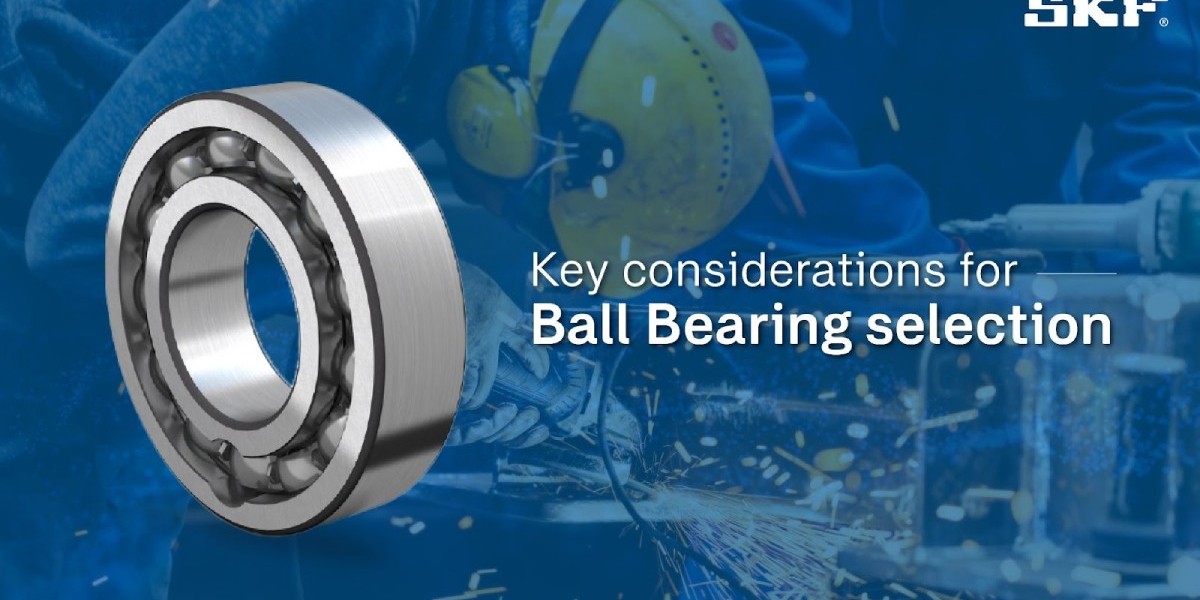Installing a suitable ball bearing is essential for getting the most out of your equipment. Due to the complexity and variability of bearing applications and specific installation locations, there is no fixed mode for selecting a bearing type. Choosing the correct type of ball bearing is of utmost importance.
A wrong bearing requires more maintenance, lowers efficiency, and, in the worst cases, causes equipment to stop working and costs significant money to fix. In selecting bearings, the operating conditions are the most essential thing that needs to be understood by bearing companies in India. Here are the factors that needs to be considered in ball bearing selection.
1. Bearing Load
Load size has been the decisive factor in bearing size selection. There are many ways in bearing load measurement. Axal load is among the ways to measure forces that act in the same direction as the shaft. Axial and radial loads work together to make a combined load or moment in a system. A bearing must handle all three loads over their expected range.
In addition, since various types of loads are applied to bearings, load magnitude, direction of application, impact, and vibration must be considered to select the proper bearing. Different bearings can be selected based on different bearings. Roller bearings are applicable for bearing heavy loads, while ball bearings are suitable for light or medium loads.
Cylindrical and deep groove ball bearings can be selected for pure radial loads, whereas thrust cylindrical roller and ball bearings can be selected for pure axial loads. Tapered roller or angular contact ball bearings are generally selected when there is a combination of axial and radial loads.
2. Speed
Every bearing is made to work well at a specific range of speeds. A system that moves fast will need different bearings than one that moves at a slow rate. Since the allowable speed depends significantly on bearing type and cage, accuracy, bearing size, load, and lubrication must be considered when selecting bearings. Angular contact, deep groove, & cylindrical roller bearings are widely used for high-speed operation.
3. Space
Bearings need to be installed in the desired space. When a shaft is designed, its strength and rigidity are considered essential. Hence, the shaft diameter, i.e., bore diameter, is determined at the start. The most suitable bearing type should be selected since a wide variety with different dimensions is available.
4. Rotation Accuracy
Bearings with grade 0 tolerance are enough to meet the requirements of the main engine. Accurate rotation delivers the required performance. However, when there are strict requirements on shaft's rotational accuracy like precision machinery, machine tool spindles, and instruments, angular contact ball bearings, cylindrical roller bearings, thrust angular contact ball bearings, and cylindrical roller bearings should be selected.
5. Rigidity
Elastic deformation under load determines the rigidity of a rolling bearing. This change is minimal and can be ignored most of the time. However, in some machines, such as machine tool spindle systems and automobile final drives, dynamic and static bearing stiffness significantly affects the system working.
6. Noise, Vibration, and Harshness
The NVH levels of ball bearing are generally low. However, low-noise bearings are usually used for medium- and small-size motors, household appliances, instruments, and office machinery with special noise and running stability requirements.
Closing Thoughts
The above points help make the right decision in the bearing selection process. Apart from this, durability, reliability, and precision play an important role. Among the bearing manufacturers in India, SKF is among the best-in-class. They have been a global leader in innovative bearing solutions and technology. With a wide range of configurations & sizes for various applications, SKF bearings ensure consistent performance and extended service life. Wherever there is movement, there is SKF.



